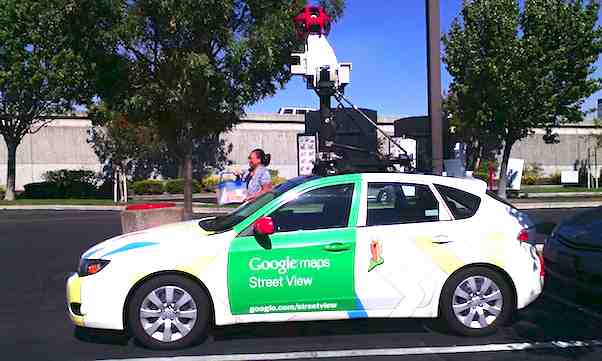
Google (Alphabet) follows its mission statement and vision statement for its leadership position in multiple industries in the global market. The mission and vision both support technological innovation. Google’s mission statement describes operations for providing useful information. This corporate mission also requires universal access and a global scope. On the other hand, Google’s vision statement describes business operations that involve technological approaches. With these approaches, the corporate vision presents the long-term goals of solving problems through technology, especially information technology. Alphabet’s current product mix of consumer electronics, artificial intelligence, automation technologies, social media and networking, and online services, including digital advertising, are based on technology-focused goals. These goals are embodied in Google’s mission statement and vision statement.
Google applies its corporate vision statement and corporate mission statement through strategies that support business growth. The resulting business condition helps Alphabet counteract the effects of competitors, including the online advertising services of Facebook and eBay; the consumer electronics of Apple, Samsung, Microsoft, and Sony; the movie streaming services of Netflix, Disney, and Amazon; and the Internet services of Verizon. The Five Forces analysis of Google (Alphabet) shows that these competitors impose strong competitive pressure in the industry. Google’s mission statement and vision statement influence strategic choices for dealing with this competitive pressure.
Google’s Mission Statement
Google’s mission statement is “Our mission is to organize the world’s information and make it universally accessible and useful.” This corporate mission adheres to utilitarian benefit or value that Alphabet provides to users of its online services and consumer electronics. The following are the main elements of Google’s mission statement:
- World’s information
- Organization
- Universal accessibility
- Usefulness
Google’s mission statement has four variables, namely, world’s information, organization, universal accessibility, and usefulness. The company fulfills the “world’s information” component by crawling websites and other online sources. The corporate mission also indicates that Google has the goal of organizing this information through its proprietary computer algorithms to provide processed information to users. Universal accessibility is another element in the company’s corporate mission statement. This goal is supported through the generic competitive strategy and intensive growth strategies of Google (Alphabet). These strategies ensure that the company’s global operations and provision of its online services (e.g., Search and YouTube) enable people to easily obtain the information they need. The fourth element of Google’s mission statement focuses on the value of information. Through the company’s algorithms and artificial intelligence, this goal is achieved. Following the goals and requirements of the corporate mission statement, this condition makes the company successful in delivering value to customers or online users, who are a major stakeholder group identified in Google’s (Alphabet’s) corporate social responsibility strategy and stakeholder management.
Google’s Vision Statement
Google’s vision is “to remain a place of incredible creativity and innovation that uses our technical expertise to tackle big problems and invest in moonshots like artificial intelligence research and quantum computing.” This corporate vision statement indicates Alphabet’s interest in developing technological solutions. The following are the main elements of Google’s vision statement:
- Incredible creativity and innovation
- Technical expertise
- Big problems
- Invest in moonshots
Google’s vision statement describes its workplace as a place of “creativity and innovation.” These factors support the creation of ideas and solutions that the company can develop using its resources. Google’s (Alphabet’s) organizational culture or work culture aligns with this description of the company’s workplace. The corporate vision statement also shows that the company has technical expertise, which can be set as a goal that the business organization needs to keep satisfying. The SWOT analysis of Google (Alphabet) shows innovative competencies that can support these goals of the corporate vision. Moreover, in considering the company’s role in the global community, this vision statement directs the company to solve big problems through moonshots involving information technology. The PESTEL/PESTLE analysis of Google (Alphabet) identifies some of the main trends that determine these big problems, moonshots, and the corresponding goals of the information technology business. Thus, Google’s vision statement sets long-term goals for the company’s involvement in developing and providing IT-based solutions that benefit the world.
Strategic Implications of Google’s (Alphabet’s) Mission and Vision
Google’s mission statement focuses on providing useful information. This means that information collection, processing, and provision remain the core of the company’s operations. An implication of this corporate mission statement is Alphabet’s continuing dependence on Google Search, online advertising, and related products. However, Google’s mission statement also implies strategies for expanding the company’s product mix to include more consumer electronics that facilitate access to such information.
Google’s vision statement aims for profitable solutions that address “big” problems. An implication of this corporate vision statement is that it sets goals that provide ideas about the kinds of technological products that the company develops. The resulting product mix is reflected in the products included in Google’s (Alphabet’s) marketing mix or 4P, as well as strategies and tactics used in other areas of the business organization. Google’s vision statement influences leaders and managers to focus on technological products that solve big problems.
References
- About Google.
- Alphabet Inc. – Form 10-K.
- Alphabet Inc. – Form S-3.
- Steiber, A. (2024). The Google model: Managing continuous innovation in a rapidly changing world. Springer Nature.
- Zheng, Y. (2024). Do information systems today play a strategic role in business? Journal of Soft Computing and Decision Analytics, 2(1), 65-70.
- Zolkin, A. L., Aygumov, T. G., Matvievskaya, T. B., Bityutskiy, A. S., & Dragulenko, V. V. (2024, March). The impact of Industry 4.0 on automation and information technology. In AIP Conference Proceedings (Vol. 3102, No. 1). AIP Publishing.